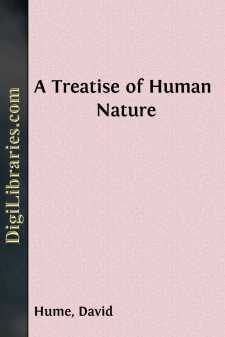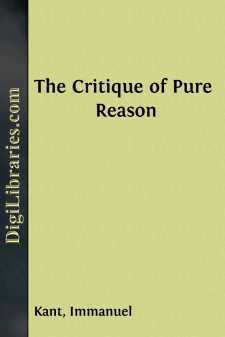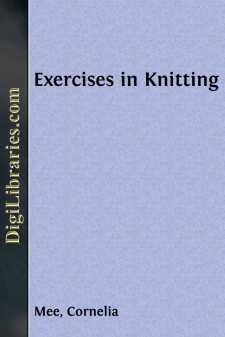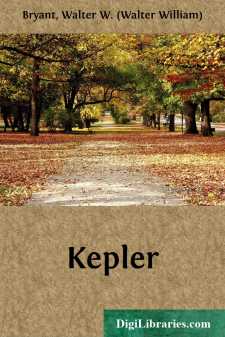Non-Classifiable
- Non-Classifiable 1768
Non-Classifiable Books
Sort by:
CHAPTER I THE SCHOLAR AND PRIEST: HIS ENVIRONMENT The century now closing has redeemed Knox from neglect, and has gathered around his name a mass of biographical material. That material, too, includes much that is of the nature of self-revelation, to be gleaned from familiar letters, as well as from his own history of his time. Yet, after all that has been brought together, Knox remains to many...
more...
by:
David Hume
INTRODUCTION. Nothing is more usual and more natural for those, who pretend to discover anything new to the world in philosophy and the sciences, than to insinuate the praises of their own systems, by decrying all those, which have been advanced before them. And indeed were they content with lamenting that ignorance, which we still lie under in the most important questions, that can come before the...
more...
by:
James Knowles
PREFACE. The present volume is a purely pastoral attempt, emanating from a fraternal affection for two of God's honored saints, and an increasingly growing desire for the glory of God in the salvation of souls. In presenting the following pages to the friends, acquaintances, and co-laborers of our departed brother and sister I desire to record my appreciation of the good achieved by two whose...
more...
by:
Alexander Philip
TIME AND PERIODICITY We can measure Time in one way only—by counting repeated motions. Apart from the operation of the physical Law of Periodicity we should have no natural measures of Time. If that statement be true it follows that apart from the operation of this law we could not attain to any knowledge of Time. Perhaps this latter proposition may not at first be readily granted. Few, probably,...
more...
by:
Immanuel Kant
I purposely omit the definitions of the categories in this treatise. I shall analyse these conceptions only so far as is necessary for the doctrine of method, which is to form a part of this critique. In a system of pure reason, definitions of them would be with justice demanded of me, but to give them here would only bide from our view the main aim of our investigation, at the same time raising doubts...
more...
by:
Cornelia Mee
As the number of stitches required to work each pattern will be mentioned, these patterns can easily be applied for any other purpose, and are most of them well adapted for doilies. Some of the most open patterns are suitable for Shetland shawls; and as the majority of the chair covers are now done in coloured wool, the colours and number of shades will be described; though, if wished in white, the...
more...
by:
Anonymous
Handbook of Wool Knitting and Crochet A Lesson in KnittingFigure 1. Casting on with Two NeedlesThe first thing to be done in knitting is to cast on or, as it is sometimes called, to "set up the foundation." (). There are several methods for this, the following being that preferred and generally used by the writer: Leave a spare end of thread, sufficient for the number of stitches you wish to...
more...
LORD KITCHENER Horatio Herbert Kitchener was Irish by birth but English by extraction, being born in County Kerry, the son of an English colonel. The fanciful might see in this first and accidental fact the presence of this simple and practical man amid the more mystical western problems and dreams which were very distant from his mind, an element which clings to all his career and gives it an...
more...
The FoundationIN the year 1441 Henry VIfounded King's College for a Rector and twelve scholars. He remodelled his plan in 1443, and styled his foundation the College of St. Mary and St. Nicholas.It was to consist of a Provost, seventy Fellows, or Scholars, together with Chaplains, Lay Clerks, and Choristers. The court was originally on the north side of the present chapel opposite Clare College,...
more...
Chapter I. Astronomy Before Kepler. In order to emphasise the importance of the reforms introduced into astronomy by Kepler, it will be well to sketch briefly the history of the theories which he had to overthrow. In very early times it must have been realised that the sun and moon were continually changing their places among the stars. The day, the month, and the year were obvious divisions of time,...
more...











